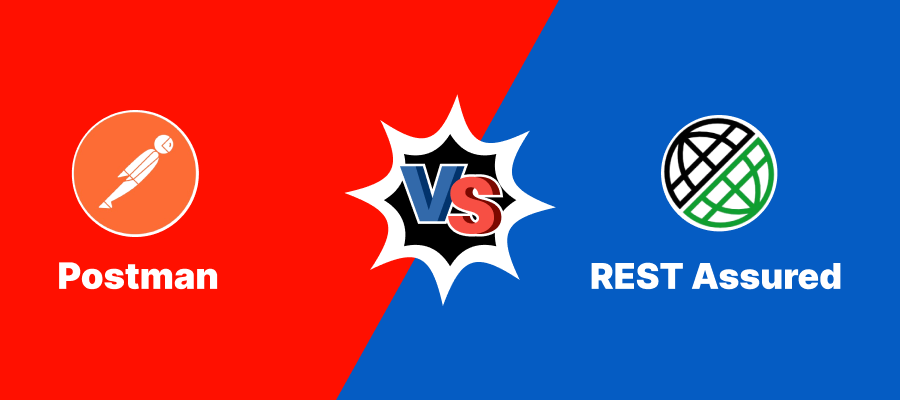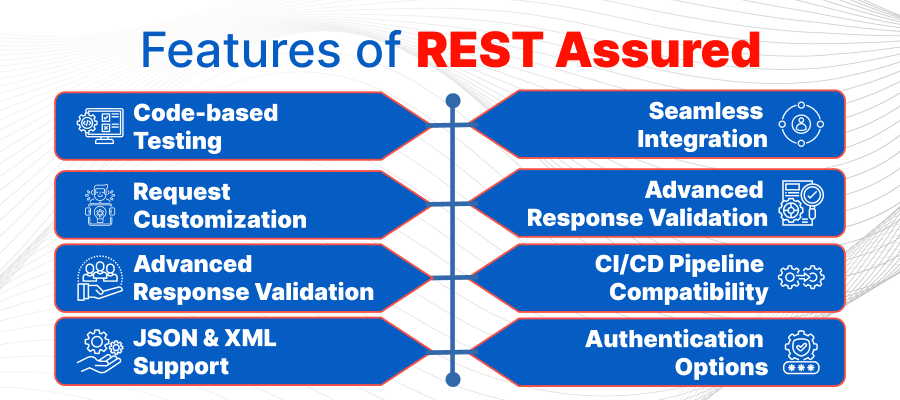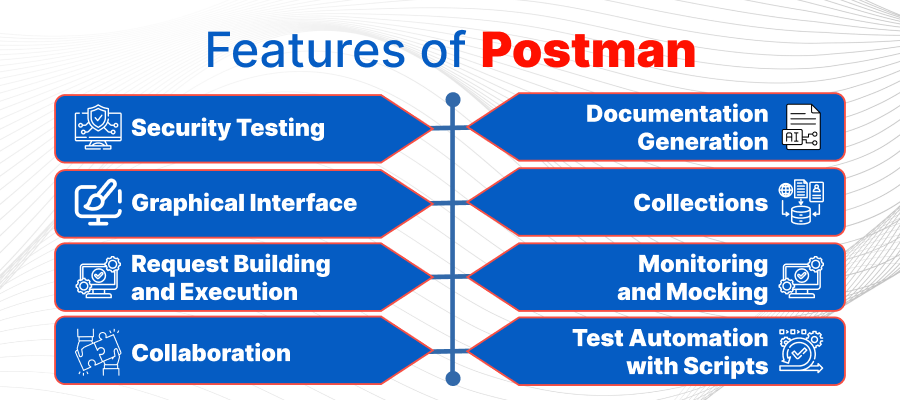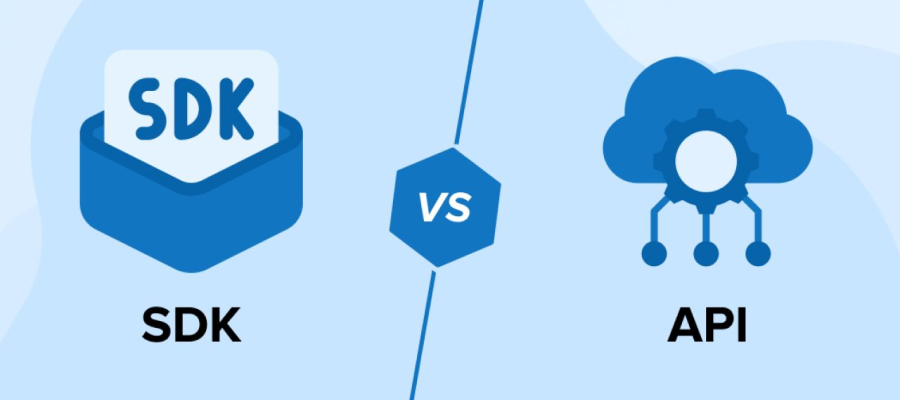REST Assured vs Postman: Which API Testing Tool is Right for You?
API testing is an essential aspect of software development, ensuring that applications communicate effectively and reliably. Among the popular tools for API testing, REST Assured and Postman stand out as preferred choices for developers and testers. While both tools excel in API testing, they cater to slightly different audiences and use cases. In this article, we’ll compare REST Assured and Postman, exploring their features, strengths, and key differences to help you decide which tool aligns with your API testing needs.
Understanding REST Assured
REST Assured is an open-source Java library tailored for automating and simplifying RESTful API testing. Designed for developers and testers proficient in Java, REST Assured allows seamless integration into Java-based projects. By providing a simple, expressive syntax, it enables users to make HTTP requests, validate responses, and perform various assertions on API data.
Key Features of REST Assured
- Code-based Testing: REST Assured empowers users to write tests programmatically, offering precise control over test logic.
- Comprehensive Request Customization: Users can configure headers, query parameters, authentication methods, and request bodies to suit their testing needs.
- Advanced Response Validation: Validate response codes, headers, and body content using a range of assertions and built-in methods.
- JSON and XML Support: Easily parse and validate data in JSON or XML formats, which are common in modern APIs.
- Seamless Integration: REST Assured integrates effortlessly with Java testing frameworks such as JUnit and TestNG, simplifying test automation workflows.
- Authentication Support: From basic authentication to OAuth, REST Assured handles various security mechanisms required for API testing
- CI/CD Pipeline Compatibility: Automate tests in continuous integration and deployment pipelines for consistent validation across development cycles.
- Flexibility for Complex Scenarios: REST Assured’s code-based approach is ideal for dynamic data-driven tests and intricate API workflows
Understanding Postman
Postman is a popular API development and testing tool with a user-friendly graphical interface. It simplifies API testing and debugging for developers, testers, and even non-technical stakeholders. With features like request building, test scripting, and collaboration, Postman is a versatile platform for managing the entire API lifecycle.
Key Features of Postman
- Graphical Interface: Postman’s intuitive interface allows users to create and manage API requests without writing extensive code.
- Request Building and Execution: Effortlessly craft HTTP requests, including GET, POST, PUT, DELETE, and more, while customizing headers, parameters, and bodies.
- Test Automation with Scripts: Write test scripts in JavaScript to validate API responses and automate routine testing tasks
- Collections and Environments: Organize API requests into collections and use environment variables for streamlined testing across different setups (e.g., development, staging, production).
- Collaboration: Share collections, tests, and documentation with team members for efficient teamwork.
- Documentation Generation: Automatically generate API documentation based on your requests and tests for easy sharing and reference.
- Monitoring and Mocking: Monitor API performance in real-time and create mock servers to simulate endpoints during development.
- Integration with Third-Party Tools: Integrate with tools like GitHub, Jenkins, and Slack for enhanced workflows.
- Security Testing: Support for OAuth, API keys, and JWT tokens ensures thorough API security testing.
Comparing REST Assured and Postman
When evaluating REST Assured and Postman, several factors come into play, such as user expertise, testing goals, and project requirements. Let’s explore their differences based on key aspects:
| Feature | REST Assured | Postman |
|---|---|---|
| User Interface | Code-based testing in Java. | Graphical interface with point-and-click simplicity. |
| Ease of Use | Requires Java proficiency. | Low learning curve; suitable for non-technical users. |
| Test Automation | Ideal for automated testing. | Supports automation but excels in manual testing. |
| Collaboration | Relies on version control systems | Built-in sharing and collaboration tools. |
| Documentation | No built-in generation. | Automatically generates interactive API documentation. |
| Environment Management | Configured programmatically | Environment variables simplify testing in multiple setups. |
| Complex Scenarios | Excellent for handling intricate logic. | Suitable for simpler scenarios with scripting support. |
| CI/CD Integration | Seamless integration into CI/CD pipelines. | Requires additional setup for CI/CD. |
| Learning Curve | Steeper, requires coding knowledge. | Accessible to users of all skill levels. |
Why Choose REST Assured?
REST Assured is particularly beneficial when:
- Your team’s development stack revolves around Java.
- You need extensive flexibility to handle complex API testing scenarios.
- Automation and integration with CI/CD pipelines are top priorities.
- You require programmatic control over tests for better scalability and maintainability.
With REST Assured, test cases can be versioned and collaborated on via tools like Git, ensuring robust test management. Its modular and extensible nature supports maintaining test suites for long-term projects.
Why Choose Postman?
Postman is the go-to choice when:
- You need a quick, user-friendly way to test APIs without coding.
- Collaboration and sharing among team members are crucial.
- Your focus is on manual or exploratory testing during development.
- You want to generate interactive documentation effortlessly.
Postman’s ease of use and visual appeal make it ideal for teams with a mix of technical and non-technical members, enabling smoother communication and faster iteration.
Using Both Tools Together
In many cases, organizations benefit from using both REST Assured and Postman in tandem. For instance:
- Postman can be used for initial exploration, manual testing, and documentation.
- REST Assured can handle automated testing, regression testing, and integration with CI/CD pipelines.
This hybrid approach allows teams to leverage the strengths of both tools while ensuring comprehensive API testing coverage.
Final Thoughts
Choosing between REST Assured and Postman depends on your project’s requirements, team expertise, and testing goals. REST Assured is a robust solution for Java-centric, automated testing environments, while Postman excels in manual testing, collaboration, and API documentation. Understanding their differences and capabilities will help you make an informed decision and create a testing workflow that best suits your needs.









